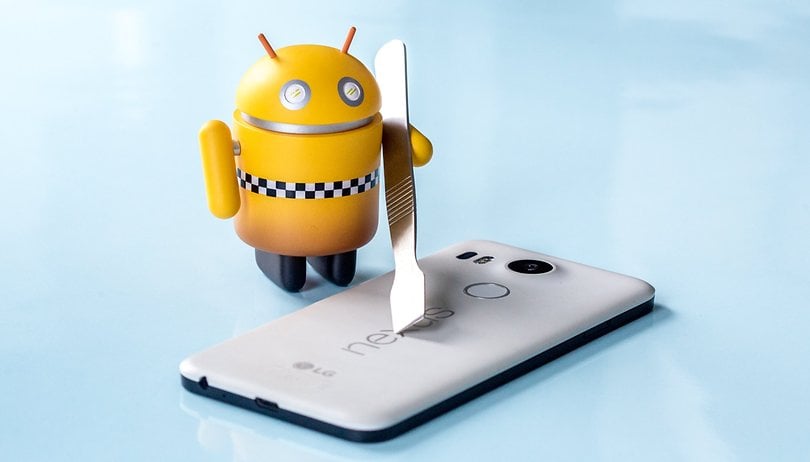How to root Android: the complete guide


In this article, we'll provide you with an overview of how to root Android devices, the tools you'll need and the difficulties you'll encounter that are unique to each manufacturer's devices. The processes used to root individual devices vary greatly and change quickly, so while we don't provide step-by-step instructions for every device, we will point you to the right place to find them. Let's get started with your rooting journey!
Before we discuss how to root, it's important to ask if you should root your Android device. That's a question only you can answer, but we have a handy article to help you better understand rooting and its pros and cons. It's also important to back up everything before you root and understand that you could lose your phone's warranty. With that disclaimer out of the way, here are some general rules and guidelines for rooting your Android devices.
Preparing to root your smartphone
There's not a single process for rooting which works on all of the thousands of Android devices out there. The process depends a lot on the manufacturer, and even then, it still varies from device to device. That makes it basically impossible to give exact, step-by-step instructions for every smartphone out there. That being said, XDA Developers has instructions available for a fairly comprehensive list of devices. That's where you should go for precise steps for your phone in particular, but first, you'll want to familiarize yourself with how rooting works in general before jumping into the nitty-gritty.
Rooting generally involves three steps:
- Unlocking the bootloader
- Flashing a new recovery
- Flashing a file which will give you root access to your device
The bootloader is the first piece of software that starts up on your smartphone when you turn it on, and it's responsible for booting up your operating system and the system recovery. To find out how to unlock your device's bootloader, just do a quick Google search, and you'll find there's a way to do it without much issue for most popular smartphones.
After you've unlocked the bootloader, you'll need a new custom recovery to replace your old system recovery with, for example, TWRP. To replace it, you'll need to familiarize yourself with ADB commands and Fastboot. Custom recoveries are for installing, or flashing, custom software on your smartphone. Using a custom recovery, you'll then be able to flash a SuperSU or Magisk file, which will grant you root access, among other features like executing commands and making backups. Once your phone is rooted, the fun begins and you can do things like install a custom ROM, ditch bloatware and use apps which require root access.

One-click rooting tools
If the idea of plugging your Android into your PC and putting a bunch of commands into a command line is a bit beyond your comfort zone, there are a number of tools which can streamline the process. Instead of manually rooting your device, you can try one-click tools like KingoRoot, KingRoot, OneClickRoot and more.
You'll want to be careful with these though. Compatibility depends on your manufacturer, which device you have, and which version of Android you're running. So, even if the application claims it's compatible with your phone, it may not be if your device is totally up-to-date. If the program relies on exploits to root your device, they may already be patched, so the tool won't work. Plus, these apps often install bloatware in the form of cleaning utilities onto your device, which defeats the purpose of rooting for some people. It's probably best to root manually given security concerns associated with these apps as well.
How do I root my smartphone?
Since the rooting process tends to vary between manufacturers, here are some general guidelines and tips for rooting smartphones from all the most popular brands. This will give you an idea of what to look out for as you root. But, for comprehensive instructions for your specific device, we recommend turning to XDA Developers' constantly updated rooting resources.
How to root Samsung devices
When it comes to rooting Samsung smartphones, you'd be well advised to bear in mind that these devices have flash counters which keep track of how many times the firmware has been fiddled with. This means that if you root your Galaxy device and flash anything on it and then have to return it for repair, Samsung might refuse your claim due to modifications being made that are not covered under warranty. Samsung no longer offers developer editions of their smartphones, and the US models of their recent flagships are notoriously difficult to root (likely having something to do with carrier influence), while the international versions tend to be much easier.
If you endeavor to root a Samsung smartphone, you'll need to be familiar with two little words unique to Samsung: Odin and Knox. Odin is the flashing tool you'll need to flash files onto the smartphone from your PC (for Macs, it's called Heimdall), in addition to the USB drivers, of course. Knox, for enterprise security, ships with many Samsung smartphones and it's meant to allow users to compartmentalize their personal and work profiles so they don't have to carry around two phones. These security features can pose difficulties during root, so you'll need to find workarounds if it's enabled on your device.

How to root Google devices
Google is in the business of helping developers and enthusiasts do what they want. So, you don't have to request an unlock code for a Nexus or Pixel bootloader, the rooting process is straightforward and there are factory images available for all of Google's devices in case you brick them. That being said, unlocking the bootloader may void your warranty.

How to root HTC devices
HTC officially supports unlocking the bootloader and provides information for doing so on its website, and transparent warranty policies. You can take advantage of the HTC Developer program to unlock the bootloader of your device, as well as to flash files onto the device.
How to root Huawei/Honor devices
To unlock a Huawei or Honor device's bootloader, you simply needed to fill out a form and request a bootloader unlock code. Sadly, Huawei decided to stop providing these codes for Huawei and Honor devices months ago, making it much more difficult root. Unfortunately, you'll have to resort to finding a workaround with a root tool.
How to root LG devices
LG smartphones are a bit of a toss-up: some have easily unlockable bootloaders, while others require a bit of trickery to crack. There's a good chance you're voiding your warranty by rooting an LG device, and the level of difficulty often depends on the carrier in question, rather than on which device you're using. In the past, LG has even provided official instructions for unlocking the LG G4 bootloader, but with the caveat that you'd be voiding your warranty.
With LG smartphones, you can root manually using a custom recovery after unlocking the bootloader, or use one-click rooting apps, whichever method you're more comfortable with given your skill level and security risk tolerance.
How to root Motorola devices
Motorola has an official support page to guide you through the bootloader unlocking process. Once that's done, you can root manually as normal. But, if your device can't be unlocked officially (thanks, Verizon!), you'll need to try using those one-click tools which take advantage of exploits.
How to root Sony devices
Depending on which kind of Sony phone you have – one with an unlockable bootloader or not – the root process will be slightly different for you. If your bootloader is officially unlockable (see the list here), it's much easier to get a custom recovery on your Xperia and then make further modifications by flashing zip and image files.
Have you rooted your Android device? How was your experience? Let us know in the comments.




















Please I want specification for nokia2.2 rooting procedure
I want to root my oppo f7 device please help me for ir
thanks
sounds like it's not worth it to me. I think Samsung sucks with their weak battery life, and stupid bloatware. I would like to get better battery life, and get rid of the stupid bloatware, but I'm afraid to ruin my phone . I'm not going to get a Samsung next time, I'm gonna try pixal, or something else. I'm sick of the ridiculous cost of Samsungs flagships, and stupid bloatware and weak battery life. their phones need to be rooted. They should make it easier to root Samsung phones.